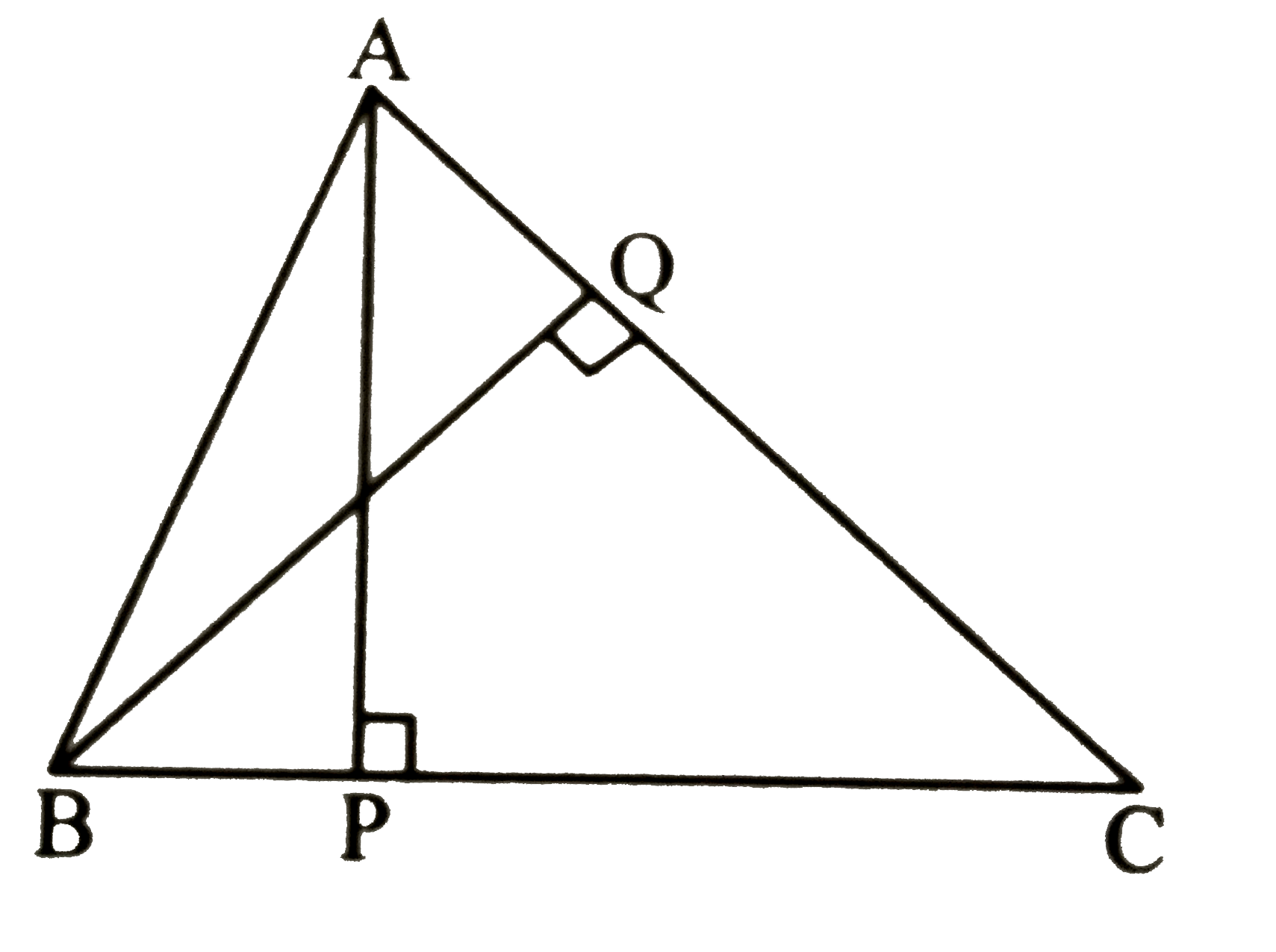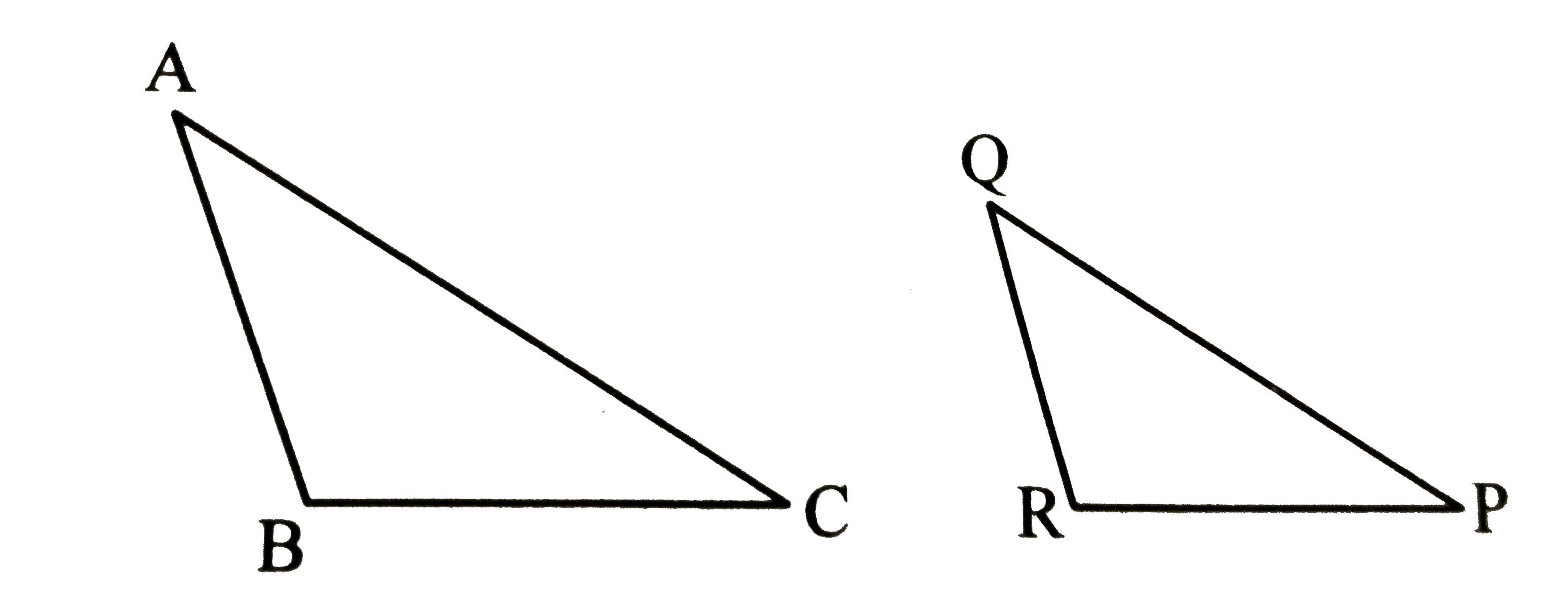In ΔABC,AP⊥BC,BQ⊥AC,B−P−C,A−Q−C, then prove that ΔCPA~ΔCQB. If AP = 7, BQ = 8, BC = 12, then find AC.
 Solution in Marathi
Solution in Marathi
The correct Answer is:AC = 10.5
Step by step video, text & image solution for In DeltaABC, AP bot BC, BQ bot AC, B - P - C, A- Q - C, then prove that DeltaCPA ~ DeltaCQB. If AP = 7, BQ = 8, BC = 12, then find AC. by Maths experts to help you in doubts & scoring excellent marks in Class 10 exams.
Updated on:21/07/2023Topper's Solved these Questions
- SIMILARITY BOOK - BAL BHARTICHAPTER - SIMILARITY EXERCISE - PRACTICE SET 1.4
6 Videos
- SIMILARITY BOOK - BAL BHARTICHAPTER - SIMILARITY EXERCISE - PROBLEM SET 1
12 Videos
- SIMILARITY BOOK - BAL BHARTICHAPTER - SIMILARITY EXERCISE - PRACTICE SET 1.2
5 Videos
- QUADRATIC EQUATIONSBOOK - BAL BHARTICHAPTER - QUADRATIC EQUATIONSEXERCISE - Problem Set - 2
27 Videos
- TRIGONOMETRYBOOK - BAL BHARTICHAPTER - TRIGONOMETRYEXERCISE - Problem set 6
18 Videos
Similar Questions
Ratio of corresponding sides of two similar triangles is 3:5, then find ratio of their areas.
View SolutionIn ΔABCandΔPQR, in a one to one correspondence.
ABQR=BCPR=CAPQ, then

View SolutionIn ΔMNP, NQ is a biscetor of ∠N. If MN = 5, PN = 7, MQ = 2.5, then find QP.
View SolutionWhich of the following equation is quadratic?
(i) x2+2x+11=0.
View SolutionIf sinθ = 11/61 find the values of cosθ using trigonometric identity.
View SolutionDetermine the point of symmetry of a regular hexagon.
View SolutionIn the figure above (not to scale), ¯¯¯¯¯¯AB⊥¯¯¯¯¯¯CDandAD is the bisector of ∠BAE.AB=3cm and AC=5cm. Find CD.
View SolutionMatch the following Column A to Column B

View SolutionMatch the following Column A to Column B

View SolutionMatch the following Column A to Column B

View SolutionThe inequation represented by the graph given below is :
View SolutionThe inequation that best describes the graph given below is _________
View SolutionThe inequation that best describes the following graph is _________
View SolutionIn the figure given below (not to scale), D is a point on the circle with center A and C is a point on the circle with centers B, ¯¯¯¯¯¯AD⊥¯¯¯¯¯¯BD and ¯¯¯¯¯¯BC⊥¯¯¯¯¯¯CA. Then which of the following is true?
ltimg src="https://d10lpgp6xz60nq.cloudfront.net/physics_images/PS_MATH_IX_C12_E06_004_Q01.png" width="80%"gt
View SolutionIn the figure (not to scale) AB = AC and BD = CD. Find ∠ADB
ltimg src="https://d10lpgp6xz60nq.cloudfront.net/physics_images/PS_MATH_IX_C15_E05_003_Q01.png" width="80%"gt
View SolutionAt point P, the value of (dy)/(dx) is : ltimg src="https://d10lpgp6xz60nq.cloudfront.net/physics_images/ALN_PHY_R04_E01_025_Q01.png" width="80%"gt
View Solution
